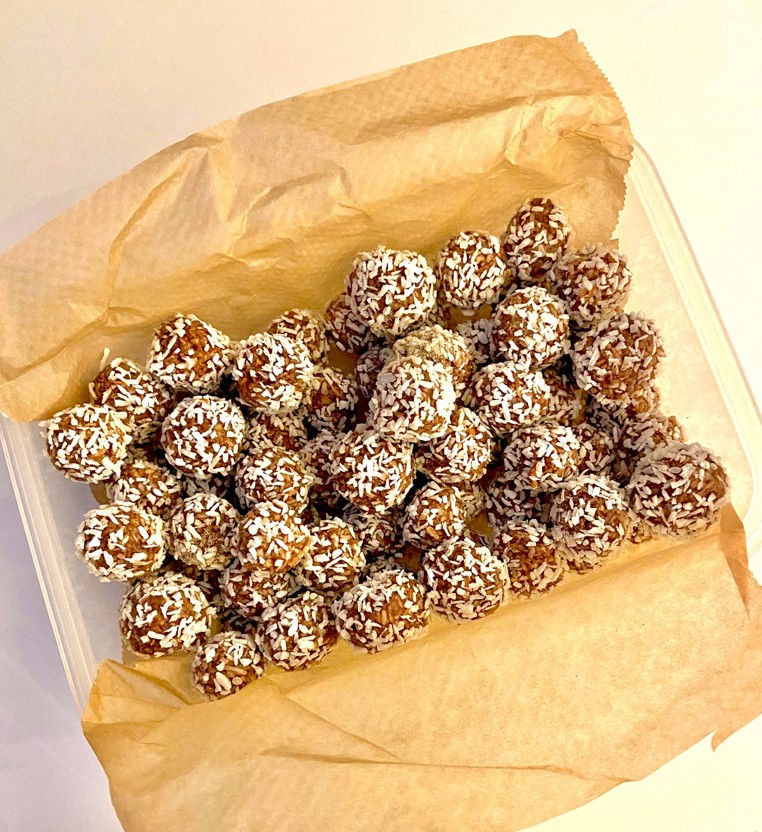NO-KNEAD BREAD
- Steven Morris
.JPG/v1/fill/w_320,h_320/file.jpg)
- Apr 15
- 3 min read
Updated: May 27

I am not an instinctive baker, in fact, I have always been intimidated by baking and, as a result, I don't bake very often. But I chanced upon an article in the New York Times about an unbelievably easy method for baking bread without the requirement to knead it. And this delighted me. Basically, you mix everything in a pot with a wooden spoon, let it rest for a few hours and then you bake it. It sounded too good to be true. Intrigued, I searched the Internet for more information. I found a multitude of recipes and videos for different types of bread, all following the same ‘no-knead’ method.
It turns out that an English nutritionist, by the name of Doris Grant, discovered this ingenious method in the 1930s quite accidentally. One day, whilst baking bread, she forgot to knead her dough before putting it in the oven. To her surprise, the outcome was a perfectly edible and tasty loaf. Elizabeth David mentions the Grant bread in her book, English Bread and Yeast Cookery.
My discovery stimulated and motivated me to start baking my own bread. I experimented with strong bread flour, wholemeal and white flour, and spelt flour. Canadian strong bread flour works best. Sometimes, I would add a herb or a seed, other times honey or a drop of olive oil. Once you follow the basic recipe, you can flavour it as you wish.
I was so happy with the quality of my breads – flavoursome and crusty with the consistency of sourdough without the hassle – that I told many of my friends to try it out.
The proportion of flour to water is 2:1. This might vary slightly depending on the flour you choose. You will need an oven pot with a cover or a Dutch oven. I use a Le Creuset pot with a cover, which traps the humidity inside the pot, helping to develop a nice crust.
Serves about 4–8
375ml/13fl oz/ 1¾ cups warm water
1 teaspoon runny honey
350g/12oz/2½ cups strong white or wholemeal bread flour, plus extra for dusting
¼ teaspoon fast-action dried yeast
1 teaspoon salt
1 tablespoon olive oil
Fine polenta, sesame seeds or finely ground oatmeal to garnish
· Mix the warm water with the honey and set aside.
· Meanwhile, in a large bowl, sift the flour, add the yeast and salt and mix.
· Make a well in the middle of the flour and pour in the honey water and mix with a spatula or wooden spoon until the flour has absorbed all the water. Then mix in the olive oil. You want to arrive at a shaggy, sticky dough. This should take no more than a minute. You can use your hands but do not knead the dough much.
· Cover the bowl in cling film or a tea towel and set aside to rest at room temperature for 12–18 hours. (I leave it to rest overnight to achieve the sourdough effect.) The dough will be ready when it has more than doubled in size.
· Prepare another bowl and line it with baking parchment. You will be placing the dough in it.
· Lightly flour your worktop. Using a rubber spatula, ease the dough onto it, in one go. You will notice the dough is stringy and sticky. Don’t be tempted to add more flour.
· Using your hands or a dough scraper, stretch and fold the dough once towards you and then away from you. Do this about 8 times. Then nudge it into a ball.
· Place it in the parchment-lined bowl. Cover and let it rise in a warm place for at least 30 minutes.
· Meanwhile, preheat the oven to 230°C/210°C Fan/450°F/Gas Mark 8 and put the pot in which you are baking the bread on the lowest shelf and heat for 30 minutes.
· Then remove the pot from the oven, lift the dough with the parchment and plop it into the hot pot. This is a rather tricky manoeuvre so be very careful not to burn yourself.
· With a serrated knife, make a few shallow cuts on the surface of the dough and sprinkle with fine polenta, sesame seeds or finely ground oatmeal. Then cover the pot.
· Bake on the lowest shelf of the oven for 30 minutes, then uncover and continue baking for about 15 minutes or until the bread turns a deep golden colour.
Lift the bread out the hot pot with the parchment and let it cool down completely on a wire rack before slicing it. It is best eaten freshly baked.



